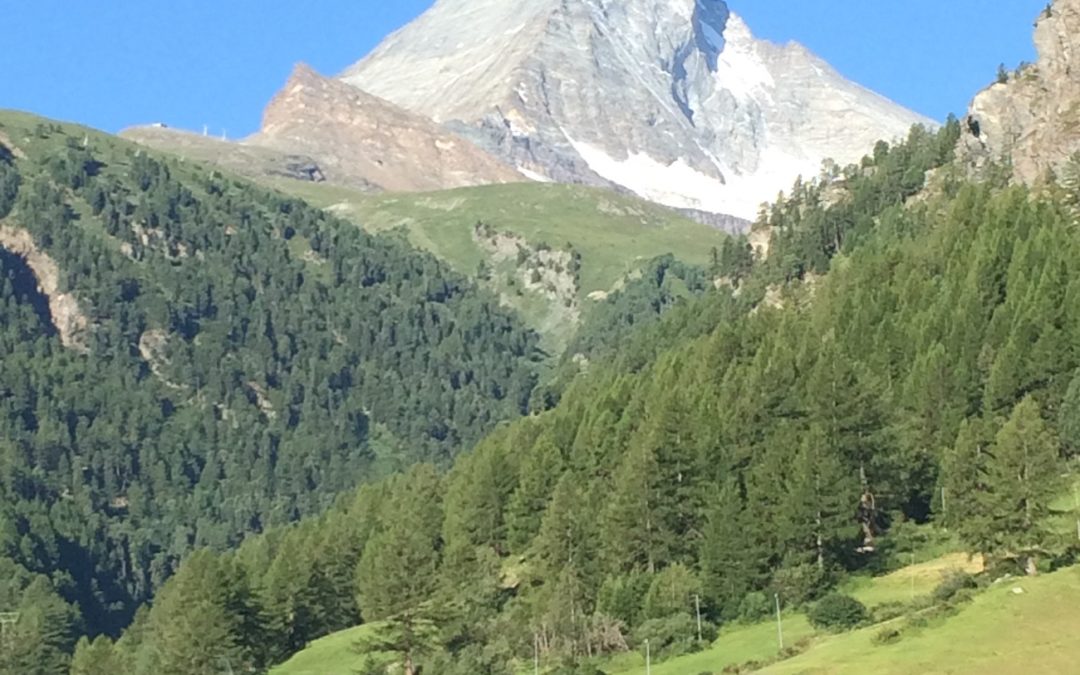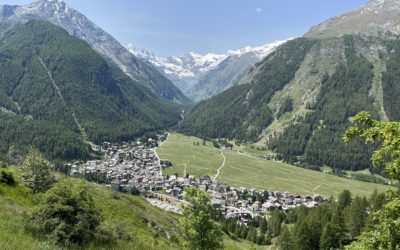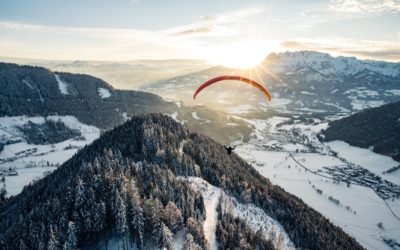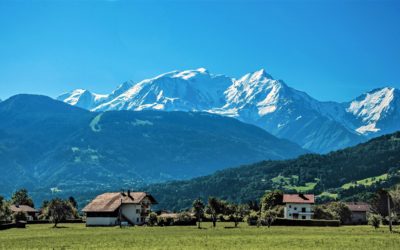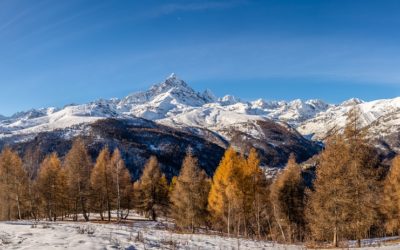Zermatt is a car-free village resort in the Valais region of Switzerland. The village is inhabited year-round, with over 5,000 inhabitants, and offers mountain sports activities all year round, summer and winter alike, thanks to an excellent network of lifts and marked trails.
Zermatt is a great place to experience the high mountains: in fact, it's often here, on the Breithorn, that budding mountaineers first reach a 4000-meter peak.
You can also take advantage of the village and its many bars and restaurants to spend a pleasant moment with your family, your partner or your friends.
But there are certainly four reasons to go to Zermatt, summer or winter.
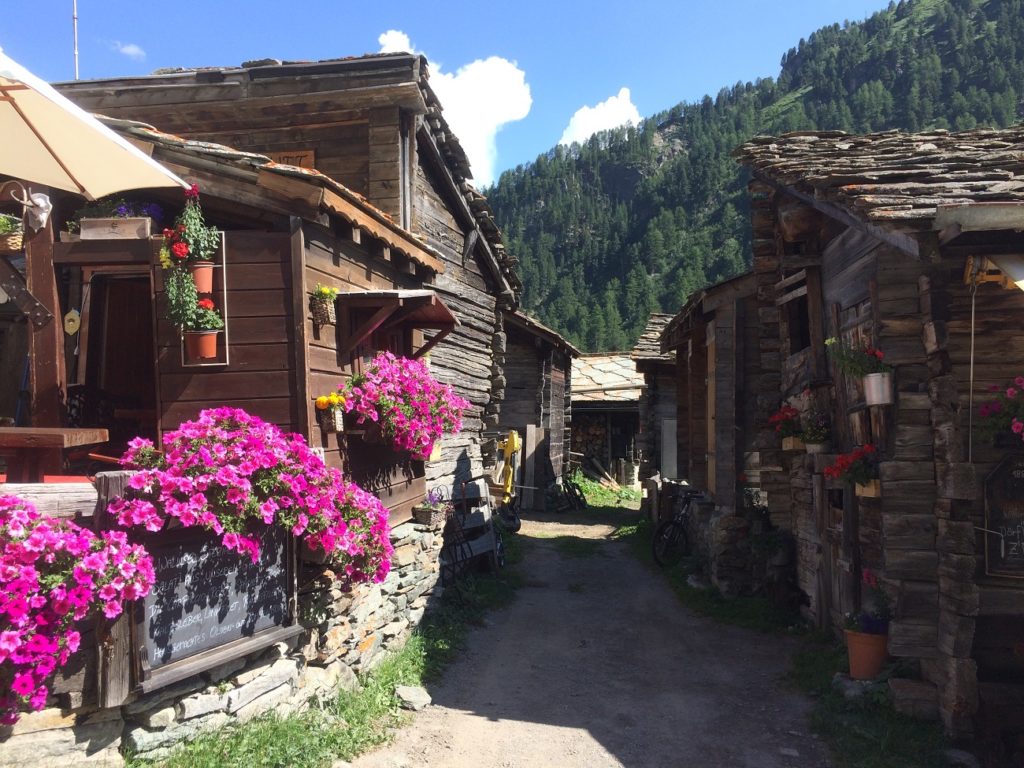
Discover Walser architecture in Zermatt
We arrive in Zermatt by train. Here, in fact, the choice has been made not to pollute the valley and therefore the view of the Matterhorn with exhaust fumes. So, with the exception of administrative services, deliveries and emergency services, everyone leaves their cars a few kilometers from the village and takes the train into town.
You can feel it as soon as you arrive, in the purity of the air and the silence that reigns in the village.
The word Zermatt comes from the German Zur Matten, meaning "on the mountain pastures". Before the village, there were only alpine barns here, and the oldest you can still see date back over 500 years.
In the oldest part of the village, the Hinterdorf, you can admire these barns raised to prevent rodents from climbing into the hay.
They can also be found higher up in the mountains, in the small hamlets that grace your walks around Zmutt.
These elevated wooden barns, known as raccards, were installed by the valley's inhabitants, with their slightly-spaced planks allowing the stored products to breathe freely. The Walsers.
A people of breeders and farmers who came from the mountains of Graubünden to settle in the valleys of the Valais, they are called Valaisans, in German Walliser, contracted to Walser. Walser culture can be found in Brig, in the Saas Fee valley, in Zermatt and also in Italy around Monte Rosa, from Ayas to Macugnaga.
The Walser culture is characterized by a dispersed settlement structure in small hamlets and the use of wood, and Zermatt's old quarter is an excellent example of this. To find out more about Walser culture in Zermatt, visit the ZermatlantisZermatt's underground museum. It also tells the story of the ascent of the Matterhorn.
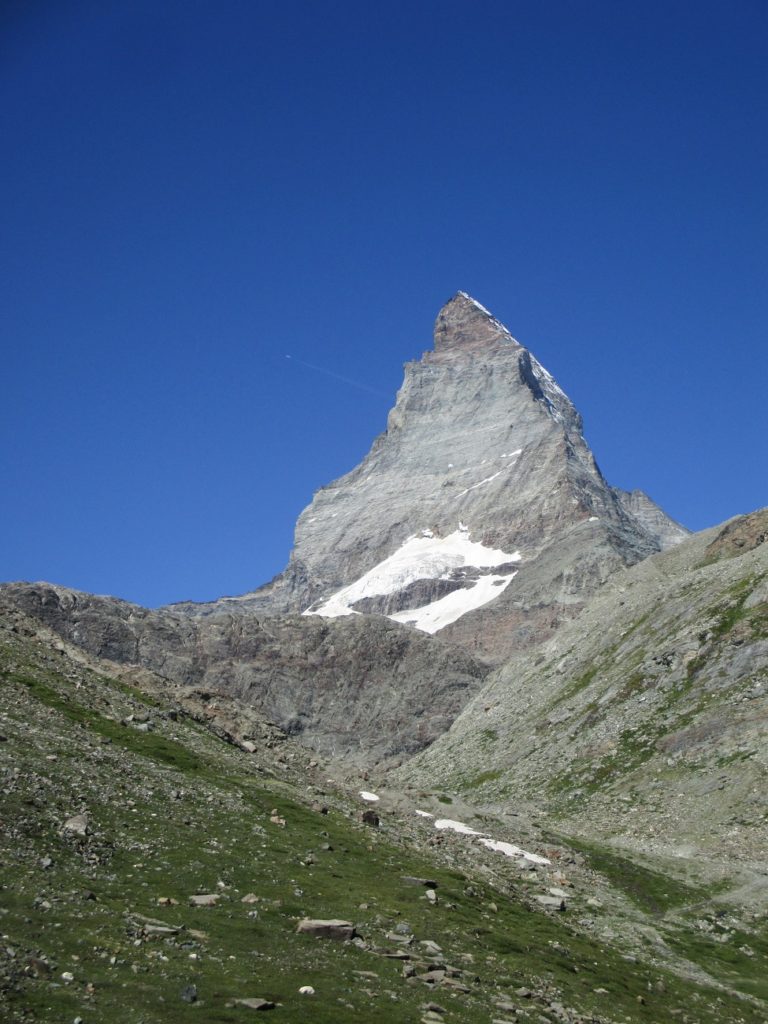
Photographing the Matterhorn from Zermatt and surroundings
Let's face it, we come to Zermatt to see the Matterhorn. One of the most photogenic mountains in the Alps.
You'll recognize this silhouette from the boxes of a famous chocolate brand...
The Matterhorn, in German, or Cervin in French, is shaped like a large horn, with its summit rising to 4478 meters. The north face, visible from Zermatt, is smoother and more vertical than the south face, visible from Breuil-Cervinia, the famous ski resort inthe Aosta Valley. Skiers can see both faces on the same day, as the ski areas of the two resorts are linked.
From the village, it's best to turn left up the valley to the east. The Matterhorn is best seen from this side of the village. From the center of town, you can often only see the peak or part of the silhouette, but it's there.
The best times to photograph the Matterhorn are in the morning, when sunlight illuminates it without dazzling the photographer, and at sunset, when the mountain takes on purplish hues before darkness.
When you get up high, the Matterhorn reveals its full splendor and silhouette, from base to summit.
Whether you're on the Rothorn, Hohtälli, Rote Nase or Gornergrat, the view of the Matterhorn is simply majestic, with Zermatt at the bottom of the valley and all the alpine pastures in between. The hikes down from these sites also offer great options for photographing the Matterhorn from different angles.
Of course, a more vertical perspective can be had when strolling along the lower edges of the Theodule glacier to the Hirli alpine pastures.
It can also be admired from the east and from the Italian side by crossing the glaciers that cover the border between Italy and Switzerland, from Klein Matterhorn to Gobba di Rollin to Testa Grigia.
Summer skiing is practiced in this region, and while the appeal for visitors who are not competitive athletes is limited, it's a once-in-a-lifetime experience.

Take the train from Zermatt to Gornergrat, over 3000 metres above sea level
The Gornergrat offers a remarkable view of the surrounding glacial cirques. At an altitude of over 3,000 metres, this building, which houses a hotel, is reached by a beautiful cogwheel train ride, with views sweeping across the space between the Matterhorn and Monte Rosa. The Gornergletscher and Grenzgletscher rivers flow at the foot of the peak on which the station stands, and originate from the eternal snows of Monte Rosa's summit.
A circus of peaks at over 4,000 metres looms up in front of the visitor. It's hard not to be fascinated by this spectacle of peaks, eternal snow and glaciers. Despite the large number of tourists around the Gornergrat station, a meditative silence envelops us as we contemplate these peaks.
In high season, it's best to buy your train ticket in advance... the queue to get on can be long.
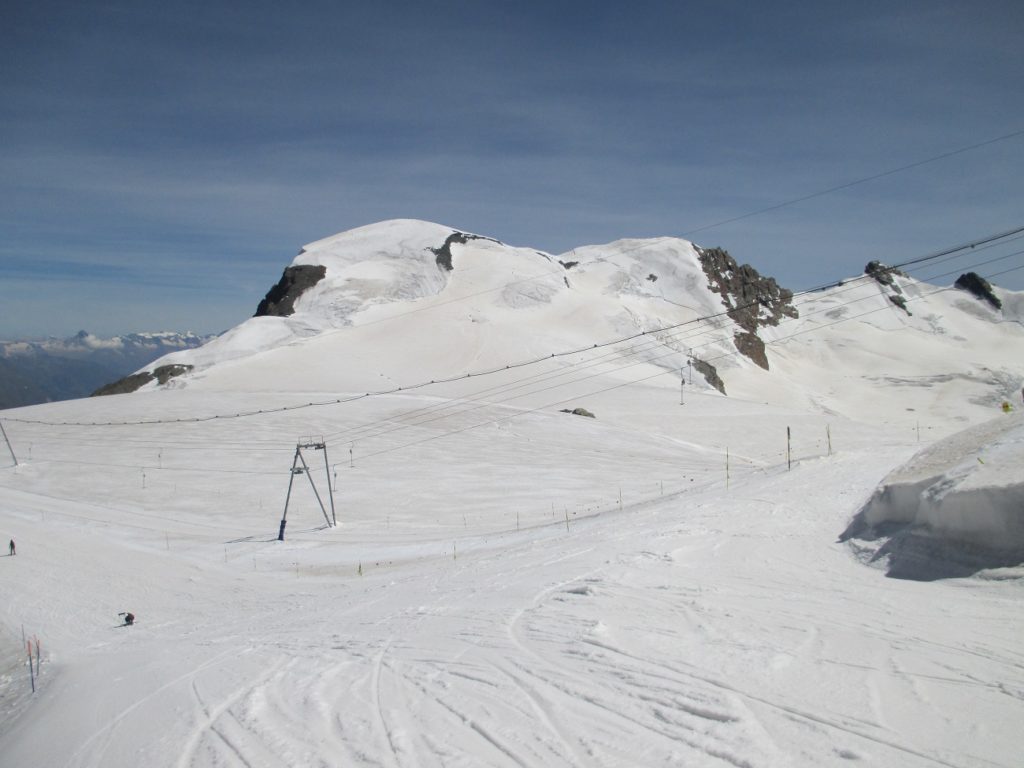
Skiing in Zermatt on Europe's highest ski area
The Zermatt-Cervinia ski area is the highest in Europe.
The Gobba di Rollin on the border between Italy and Switzerland lies at an altitude of 3899 metres. Your head will therefore be at 3900 meters! You can't ski higher than this in Europe, on a marked ski area.
It's also the third-highest ski area in the world! Only Gulmarg in India (3980 metres) and Breckenridge in the USA (3962 metres) are higher than Zermatt at 3899 metres.
What's interesting about Zermatt is that the altitude reached at the Gobba di Rollin is not just the extreme summit of a slope, but the entire glacial plateau at the foot of the Matterhorn is included in the ski area with altitudes above 3300 meters, well above most of the peaks of ski resorts in the rest of the Alps.
Skiing at high altitude is not without its difficulties: beware of the strong sun, and be sure to protect yourself. And, of course, you run out of breath more quickly than at lower altitudes, so be careful not to pull too hard on the rope.
These precautions should not, however, detract from the pleasure of skiing at the foot of the Matterhorn!
Going to Zermatt is a true mountain experience. A real village with a well-preserved old town center, ski lifts that take you up to the highest peaks to contemplate high-mountain landscapes, and dozens of kilometers of trails to hike in a generous Nature, almost mystical in its immensity and timelessness.
You may also be interested in these articles:
Courmayeur and its balconies overlooking Mont Blanc
Courmayeur, the village at the foot of Mont Blanc on the Italian side. Discover the breathtaking scenery with AlpAddict.
Cogne, the village at the gates of Paradise
An authentic mountain experience in Cogne, a pearl of the Aosta Valley, at the entrance to the Gran Paradiso National Park.
Alpine Pearls, the authentic mountain
AlpAddict takes you on a tour of the Alpine Pearls network of villages. An authentic mountain experience accessible by soft mobility.
Skiing in Switzerland from the South of France
AlpAddict offers you a selection of winter sports resorts in Switzerland that are easily accessible from the southern half of France.
Discover the Mont Blanc region
Mont Blanc country is a feast for the eyes. The giant of the Alps is still there, but the landscapes are less steep and greener. AlpAddict takes you for a walk.
The Alps of Piedmont, Valle d'Aosta and Lombardy
AlpAddict invites you to discover the beauty of north-western Italy, between mountains and gastronomy.
Switzerland, between lakes and mountains
AlpAddict invites you to discover Switzerland. A country whose many blue-tinted lakes and glaciers glistening above the pastures will delight you.

